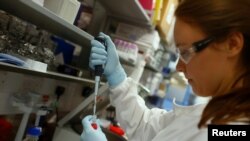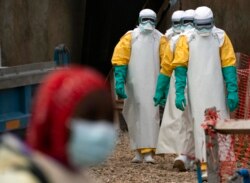Parts of the world ravaged by outbreaks of Ebola can now heave a small sigh of relief thanks to the stockpile of vaccine, the International Coordinating Group (ICG) announced Monday.
The single-dose vaccine will allow affected countries, particularly those in Africa, to better contain the deadly virus during future outbreaks.
“This new stockpile is an excellent example of solidarity, science and cooperation between international organizations and the private sector to save lives,” Dr. Tedros Adhanom Ghebreyesus, WHO director-general, said in a Tuesday press release on the UNICEF website.
The vaccine development is a joint effort of four leading international health and humanitarian organizations: World Health Organization (WHO), UNICEF, the International Federation of Red Cross and Red Crescent Societies (IFRC) and Médecins Sans Frontières (MSF), with financial support from Gavi, the Vaccine Alliance.
The vaccine was piloted among 350,000 people in Guinea and in the 2018-2020 Ebola outbreaks in the Democratic Republic of Congo under a protocol for “compassionate use.”
It has since been licensed by the European Medicines Agency, the U.S. Food and Drug Administration and eight African countries.
Both Guinea and Congo were slow to recover from the epidemic that ravaged West Africa and affected people in other parts of the world.
More than 15,000 cases of the hemorrhagic feverlike disease were recorded. With a fatality rate of up to 90%, more than 11,300 people died between 2014 and 2016, according to the U.S. Centers for Disease Control and Prevention.
Two years after it was brought under control, Ebola reared its head again in the Congo for two more years.
The vaccine, which is recommended by the Strategic Advisory Group of Experts (SAGE) on immunization for use in Ebola outbreaks, will be managed by UNICEF although the ICG will be “the decision-making body for its allocation and release,” the press release said.
“We are proud to be part of this unprecedented effort to help bring potential Ebola outbreaks quickly under control,” Henrietta Fore, UNICEF executive director, said in the press release.
Fore said “when it comes to disease outbreaks, preparedness is key.” She said the vaccine stash is a “remarkable achievement” that will allow vaccines to be delivered to those who need them in a timely manner.
Countries that make requests for vaccines should receive a response in 48 hours. The vaccines will then be shipped from Switzerland in temperature-controlled packages. The statement said the target is to make “overall delivery time from the stockpile to countries" in seven days.
An initial 6,890 doses are now available for outbreak response with additional quantities to be delivered into the reserve this month and throughout 2021 and beyond.
It could take between two to three years to reach the SAGE-recommended level of 500,000 doses in the emergency stockpile.
Unlike COVID-19, Ebola is rare and unpredictable, hence the need to create a reserve in the absence of a “natural market for the vaccine.”
In this case, vaccines are available in limited quantities, and therefore they are reserved for health and front-line workers and when there is an outbreak.
IFRC Secretary General Jagan Chapagain said in the release, “through each outbreak, our volunteers have risked their lives to save lives.” Chapagain hopes “the impact of this terrible disease will be dramatically reduced” with the vaccine.
“An Ebola vaccine stockpile can increase transparency in the management of existing global stocks and the timely deployment of the vaccine where it’s most needed, something MSF has called for during recent outbreaks in the Democratic Republic of Congo,” Dr. Natalie Roberts, Program Manager, MSF Foundation, said in the release.
Meanwhile, the WHO, UNICEF, Gavi, and vaccine manufacturers are continuously monitoring the situation and will increase supply should demand soar.
The current vaccine is manufactured by Merck, Sharp & Dohme (MSD) Corp. and developed with financial support from the United States.

